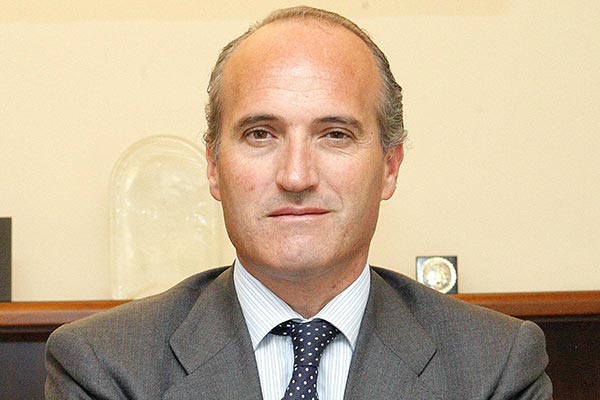
Julián Núñez
President of Seopan
“The only solution that will allow Spain to continue investing in infrastructure (and there’s a deficit in education and health infrastructure) is public-private collaboration”
What direction should the construction sector take?
At the most critical time for our economy, during the period 2000–2007, the construction industry contributed around 30 to 35 percent to the Spanish economy, which was perhaps too high. Right now that contribution must be around 10 to 12 percent. We are moving toward the situation we should be in: ultimately, it’s a question of supply and demand. The worst of the crisis is over: we are on the path to economic recovery, and for the first time we’re seeing positive figures for our activity in particular—the building industry—which represents three-quarters of total national construction activity. This activity should not be the backbone of the economy as a whole, although it is clear that the construction sector makes a very positive contribution in all of the world’s largest countries, both in terms of jobs creation and fiscal returns. I don’t know what level of recovery we can expect, but taking into account that 1.75 million jobs have been lost in the construction sector over the last seven years, without a doubt it will be significant.
What should Spain’s priorities be in the sphere of infrastructure?
In some types of infrastructure we’ve done a very good job. But we have a deficit of education and health infrastructure. According to Eurostat data for 2013, while the ratio of euros/inhabitant of gross capital investment in education infrastructure stood at €30 in Spain, it was €136 in France, €163 in the United Kingdom, €124 in Germany, and €102 on average in the European Union as a whole. The media don’t discuss this enormous investment deficit. If we look at gross capital investment in health infrastructure, the average for the EU-28 for 2003 was €63/inhabitant, compared to €41 in Spain but €114 in France, €76 in Italy, and €94 in the United Kingdom.
How can we resolve or compensate for the lack of public investment in infrastructure?
We certainly need to complete the network of motorways and finish the high-speed rail network, but we have done our homework and we’ve achieved a superb level. Now we have to maintain and preserve this infrastructure. What we spend on preservation here is half the amount spent per kilometer in Germany or France, and the same can be said of railway construction. The general public is not aware of these deficiencies, and neither is the political class because they haven’t taken it into consideration. We need to finish what we’ve started, although we also need to focus on other important deficits we have in Spain: public amenities, logistics, water, energy, improvements to the energy efficiency of buildings, and energy infrastructure. How can we resolve these deficits in an economy that has to fulfill certain objectives related to the tremendous public deficit and public debt for 2018? It’s impossible. The only solution is public-private collaboration, and to this end we need to update and modernize the Spain’s regulatory framework. This doesn’t mean talking about privatizing any infrastructure services. The government itself has private or extra-budgetary financing formulas. When ADIF, Spain’s public railway infrastructure manager, issues debt, it is getting its financing from the markets as opposed to borrowing against the public budget. This is extra-budgetary financing.
